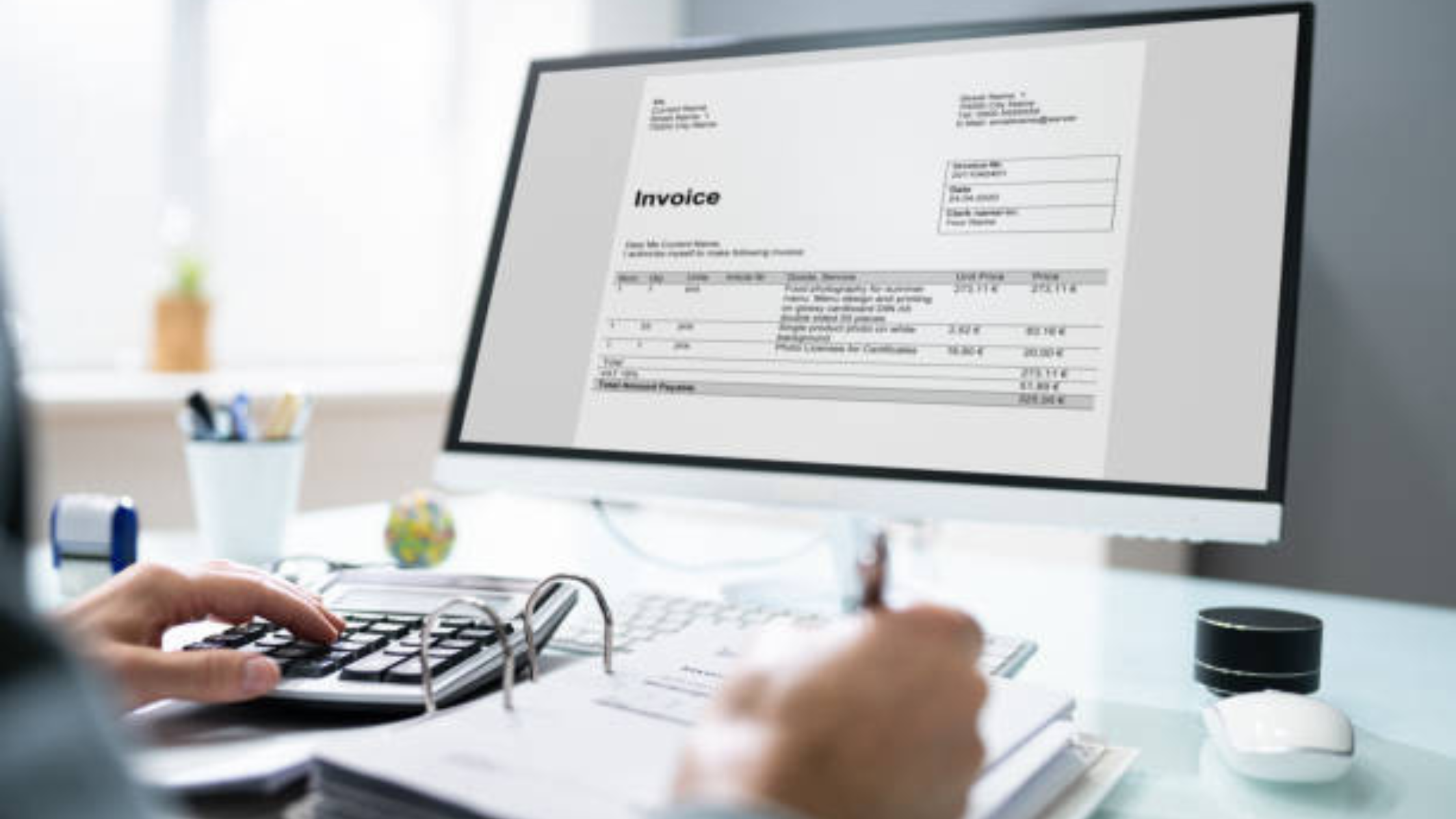Manage Your Finances: Generate Salary Receipts with Ease

Managing Your Finances Effortlessly
Welcome to a guide on managing your finances effortlessly by generating salary receipts with ease. Keeping track of your income and expenses is vital for financial stability. By creating professional salary receipts, you can streamline your financial record-keeping process and maintain clarity in your earnings. Whether you are a freelancer, small business owner, or simply looking to organize your personal finances, this guide will provide you with practical tips and tools to generate accurate salary receipts efficiently. Say goodbye to manual calculations and paperwork hassles, and embrace a more efficient way to manage your finances. Let's dive in and discover how you can take control of your financial matters with simplicity and effectiveness.
Tools for Generating Salary Receipts
When it comes to tools for generating salary receipts, businesses have a plethora of options to choose from to streamline their payroll processes. One of the most crucial aspects to consider is user-friendliness. A user-friendly platform ensures that all employees involved in the salary receipt generation process can easily navigate and utilize the tool, promoting efficiency and reducing errors. Customizable templates are also essential as they allow businesses to tailor receipts to their specific requirements and branding guidelines. This customization not only enhances the overall look and feel of the receipts but also helps in reinforcing the company's brand identity.
Moreover, compliance with legal requirements is non-negotiable. Ensuring that the software adheres to tax laws, data protection regulations, and other legal standards is imperative to avoid any potential legal repercussions. Data security is another critical factor to prioritize. The platform should offer robust security measures to safeguard sensitive employee information stored in the receipts, protecting both the employees and the company from data breaches. Integration capabilities with other financial systems, especially payroll systems, are crucial for seamless data transfer and reporting.
By automating calculations, these software solutions not only save time but also significantly reduce the risk of errors in salary calculations, promoting accuracy and reliability. Easy customization options further aid in accurately reflecting all payment components, deductions, and allowances, ensuring transparency and trust in the payment process. Clear and detailed breakdowns of deductions and allowances provide employees with a comprehensive overview of their earnings, fostering transparency and satisfaction.
Using consistent branding elements in receipts not only reinforces the company's identity but also projects a professional image to employees. A well-organized layout of salary receipts enhances readability and comprehension, making it easier for employees to understand their pay details. Best practices for using templates and formats effectively in creating salary receipts include ensuring compliance with tax laws, accurately reflecting all payment components, providing clear breakdowns of deductions and allowances, using consistent branding elements, and maintaining a professional and organized layout.
Overall, choosing the right tool for generating salary receipts can significantly improve efficiency, accuracy, and compliance in the salary payment process, benefiting both the employees and the business.
Generating Error-Free Salary Receipts
When it comes to generating salary receipts, businesses must pay close attention to various crucial details to ensure accuracy, compliance, and efficiency. Creating a comprehensive and error-free salary receipt involves meticulous steps that encompass employee particulars, salary breakdown, deductions, taxes, legal adherence, and leveraging modern tools for streamlined processes. Let's delve into a step-by-step guide to help businesses navigate through the intricacies of generating salary receipts effectively.
1. Employee Information
The foundation of any salary receipt lies in accurately documenting employee details such as name, designation, employee ID, and contact information. This information is vital for record-keeping and ensuring that the receipt is assigned to the correct individual.
2. Salary Breakdown
A transparent breakdown of the employee's salary components is essential. This includes basic salary, allowances, bonuses, overtime pay, and any other earnings that contribute to the total salary. Presenting this information clearly helps employees understand how their salary is calculated.
3. Deductions and Taxes
Deductions for items like provident fund contributions, health insurance premiums, and income tax must be clearly outlined. Calculations for these deductions should be accurate to prevent discrepancies and ensure that employees are aware of the amounts being deducted from their salary.
4. Compliance with Labor Laws
It is imperative to ensure that the salary receipt complies with labor laws and regulations. Any deviations from legal requirements can lead to penalties and legal complications. Adhering to these laws protects both the employer and the employee.
5. Verification and Double-Check
Before finalizing the salary receipt, it is crucial to verify all information for accuracy. Double-check mathematical calculations, cross-verify employee details, and ensure that the receipt meets all legal standards. This step minimizes errors and instills confidence in the payment process.
6. Utilizing Tools like the Bill Generator
In the digital age, leveraging tools such as the Bill Generator can significantly simplify the process of creating salary receipts. These platforms automate calculations, provide templates for professional-looking receipts, and offer efficiency in managing salary documentation.
By following these steps meticulously and embracing the benefits of modern technology, businesses can ensure that their salary receipt generation process is seamless, compliant, and error-free.
Best Practices for Salary Receipt Management
Maintaining Detailed Records
Keeping detailed records of all salary receipts is crucial for financial transparency and compliance. By maintaining organized records, businesses can easily track payments, deductions, and ensure accurate reporting. Detailed records should include employee information, payment dates, salary amounts, and any deductions made. These records serve as a valuable resource during audits and tax filings.
Ensuring Accuracy and Consistency
Double-checking salary receipts for accuracy is another essential practice. Mistakes in salary amounts or tax deductions can lead to discrepancies and legal issues. Implementing a review process can help catch errors before they become problematic. Additionally, ensuring consistency in documenting salary receipts across all employees and pay periods is vital for maintaining financial integrity.
Enhancing Security Measures
Protecting salary receipt information is paramount. Utilize secure storage methods, such as password-protected files or encrypted databases, to prevent unauthorized access. Regularly update passwords and access controls to enhance security measures. Moreover, consider implementing multi-factor authentication for added protection. Conducting regular security audits can help identify vulnerabilities and ensure data protection.
Promoting Confidentiality and Data Privacy
Maintaining the confidentiality of salary receipt information is essential for fostering trust among employees. Restrict access to sensitive salary data only to authorized personnel to prevent data breaches. Develop clear policies regarding data privacy and confidentiality, outlining consequences for unauthorized disclosure. Employee training on data handling and confidentiality protocols can further reinforce the importance of safeguarding sensitive financial information.
Importance of Automation in Salary Receipt Management
Automation plays a significant role in enhancing salary receipt management processes. Implementing automated systems for generating and distributing salary receipts can streamline operations, reduce manual errors, and improve efficiency. Automation also ensures timely delivery of salary information to employees, enhancing overall satisfaction and reducing administrative burden.
Leveraging Technology for Advanced Reporting and Analysis
Technology offers advanced tools for analyzing salary receipt data, enabling businesses to gain valuable insights into payroll trends, employee compensation patterns, and compliance metrics. By leveraging data analytics and reporting software, organizations can identify areas for cost optimization, forecast future salary expenses, and ensure alignment with industry standards. Access to real-time reporting capabilities empowers decision-makers to make informed choices that drive business growth and financial sustainability.
Addressing Regulatory Compliance in Salary Receipt Management
Adhering to regulatory requirements is non-negotiable when it comes to salary receipt management. Businesses must stay updated on labor laws, tax regulations, and data protection mandates to avoid fines, penalties, and legal repercussions. Regularly reviewing and adjusting salary receipt processes to align with changing compliance standards is essential for mitigating risks and maintaining a reputation of integrity and trustworthiness.
By integrating these additional best practices into salary receipt management strategies, businesses can not only enhance operational efficiency and data security but also position themselves for long-term success in a competitive business landscape.
Conclusion
Implementing a systematic approach to generating salary receipts can significantly streamline the financial management process for individuals and businesses alike. By utilizing modern tools and software solutions, such as digital receipt generators, one can save time, reduce errors, and ensure compliance with financial regulations. Ultimately, efficient salary receipt generation not only enhances financial organization but also promotes transparency and accountability in financial transactions. Embracing these practices can lead to improved financial health and peace of mind for all parties involved.







